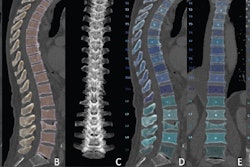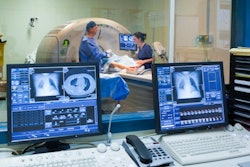Developing protocols and having resources available are a couple of ways hospitals can limit radiation exposure from CT imaging to children who have undergone appendectomies, suggest findings published March 20 in the Journal of Pediatric Surgery.
A team led by Peter Juviler, MD, from the University of Rochester Medical Center in New York described shared qualities among hospitals with low CT use and strategies for decreasing postoperative CT imaging for children with complicated appendicitis -- strategies that involve interdisciplinary collaboration and the promotion of radiation stewardship.
“In the evaluation and management of a child recovering from complicated appendicitis, factors that distinguish high and low postoperative CT-utilization hospitals can be used to formulate radiation stewardship improvement ideas,” the Juviler team wrote.
CT imaging is the go-to method for diagnosing complications after patients undergo appendectomy. For pediatric patients, this means being exposed to ionizing radiation, placing them at higher risk of developing hematologic and solid malignancies later in life.
Juviler and colleagues have been leading the Pediatric Surgery Quality Collaborative (PSQC) CT reduction workgroup, which aims to evaluate factors influencing CT usage in evaluating postappendectomy abscesses among participating hospitals. The collaborative also seeks to develop tools to reduce aggregate postappendectomy CT use for children with complicated appendicitis from 14% to 10% by 2026 among member hospitals.
For the study, the team identified differences between children’s hospitals with high and low postoperative CT usage for complicated appendicitis. The group compared postoperative CT imaging for complicated appendicitis and involved key stakeholders from 11 hospitals (five low CT use, six high CT use). The stakeholders participated in semistructured interviews regarding postoperative imaging and from there, the team performed qualitative analysis of transcripts based on the Theoretical Domains Framework.
The researchers identified the following five most prominent domains influencing CT use: skills, beliefs about capabilities, intentions/goals, memory and decision processes, and environment.
They also reported that children’s hospitals with lower rates of postoperative CT use tended to do the following:
- Trust and educate ultrasound technicians.
- Believe ultrasound strengths outweigh weaknesses.
- Image no sooner than seven days postoperatively.
- Have access to sufficient quality improvement resources.
- Maintain trusting relationships between specialties.
- Prioritize radiation stewardship.
On the ultrasound front, the team noted that access to the modality was not an issue for the member hospitals. It also highlighted that the small number of patients returning to a referral center emergency department after discharge may not have consistent access to ultrasound, particularly with pediatric expertise.
“This scenario presents the choice of whether to transfer to the tertiary hospital for ultrasound without a definitive diagnosis, or to obtain CT imaging for more consistently reliable diagnosis prior to transfer,” the study authors wrote.
Additionally, MRI use was not linked to high or low CT-utilization hospitals, though the authors noted that most hospitals were interested in its use.
“MRI may represent an important alternative to CT if barriers to implementation, including infrastructure, availability, efficiency, and cost, can be addressed,” they wrote.
The full findings can be found here.



















